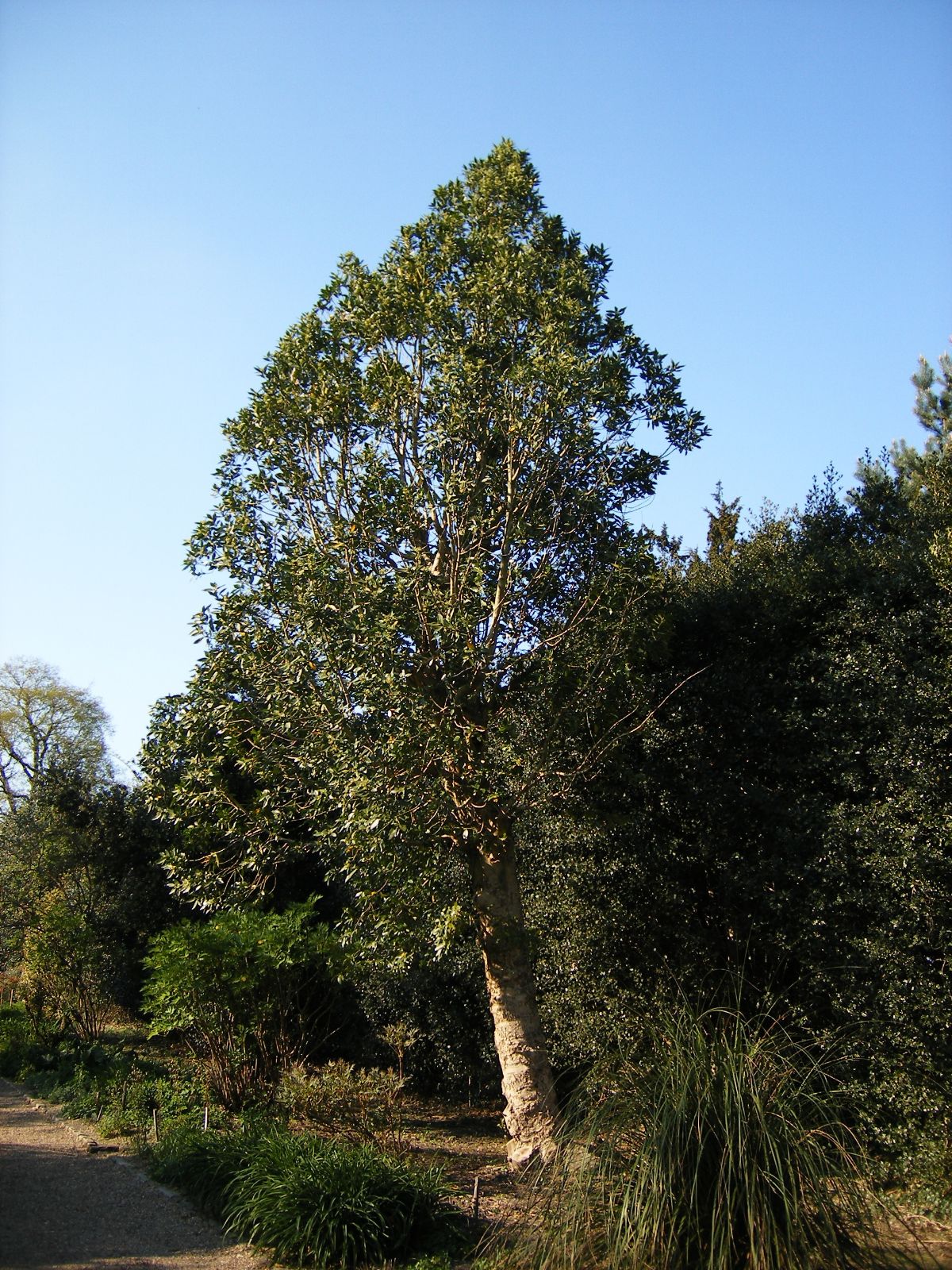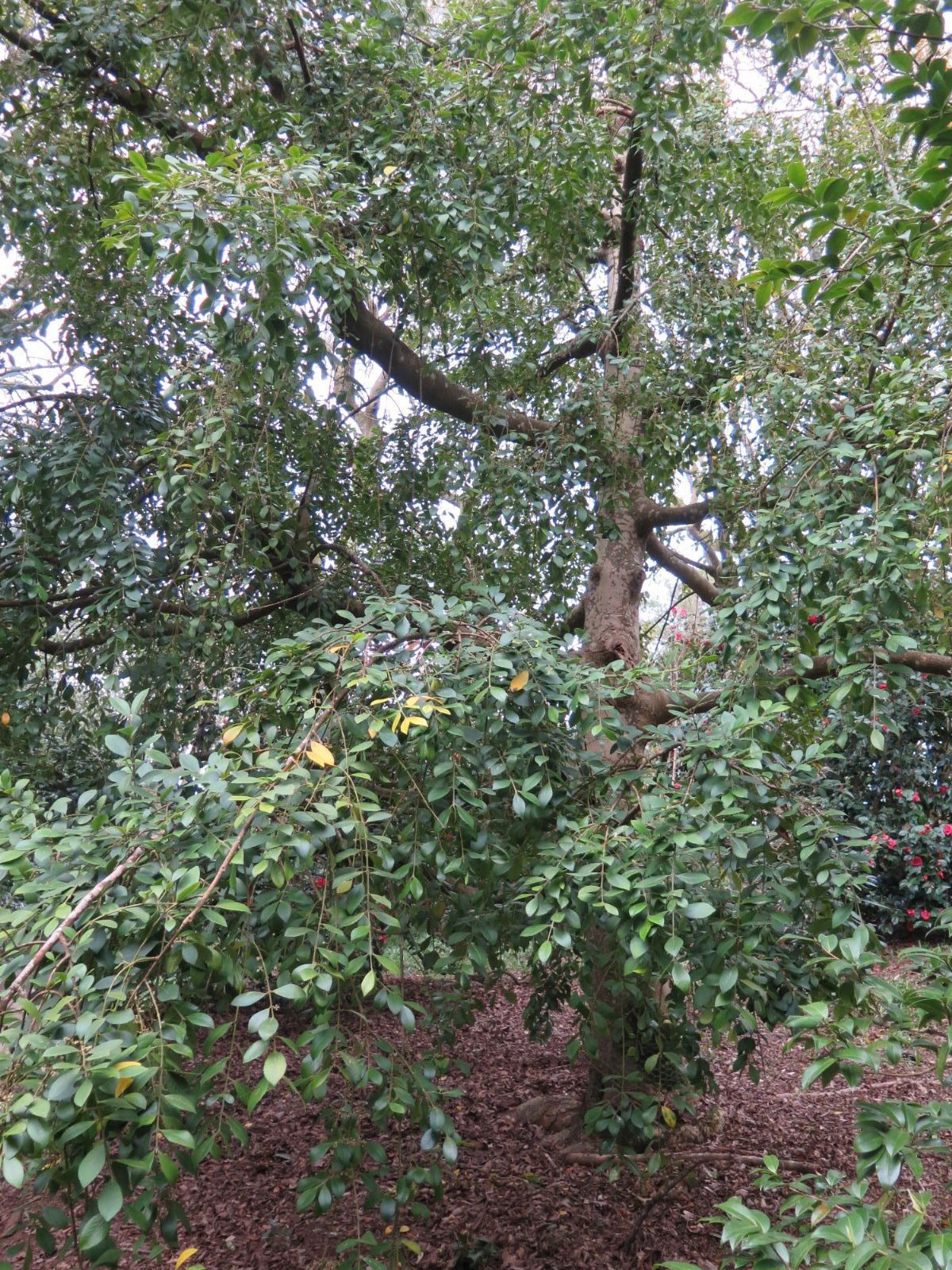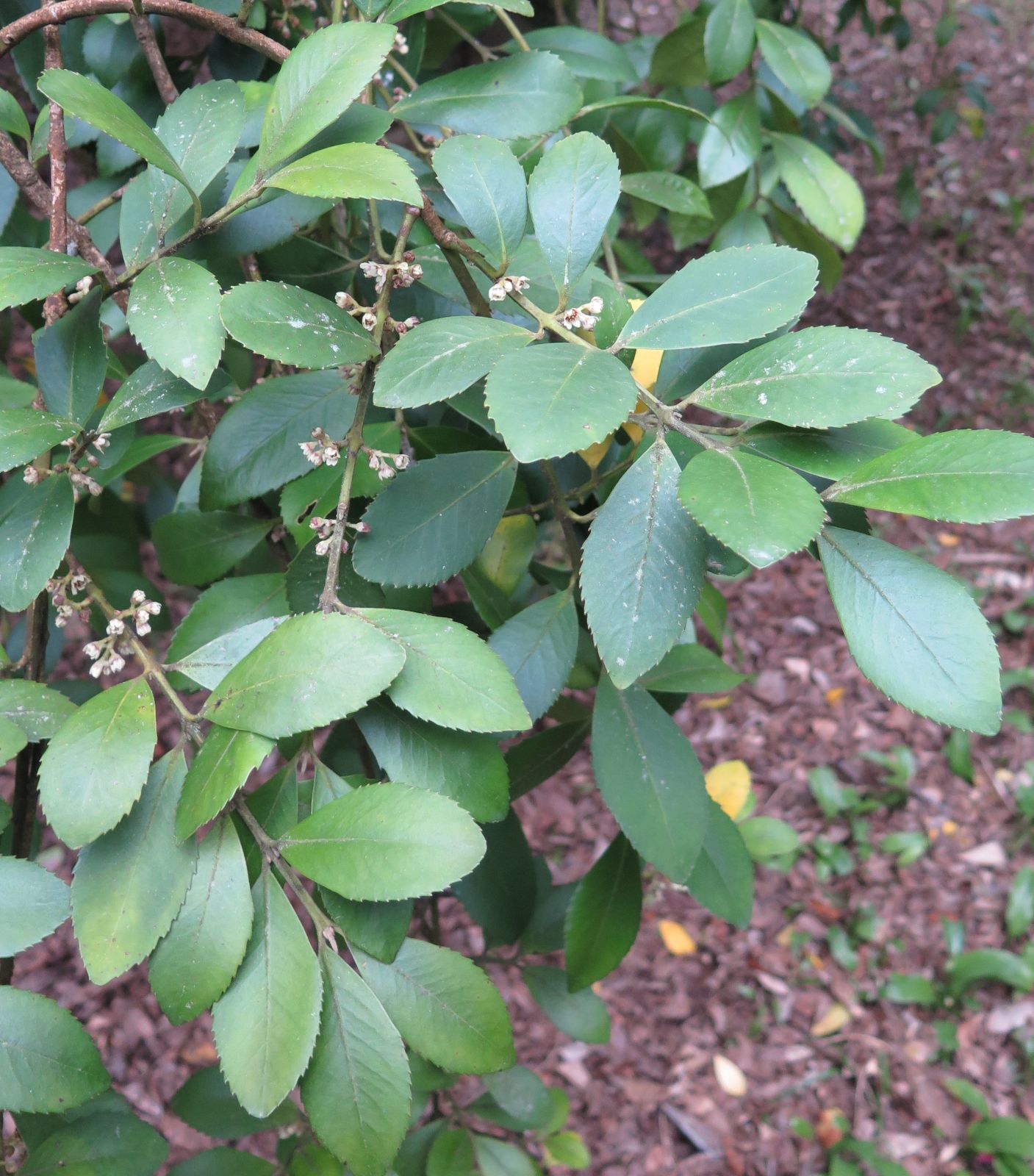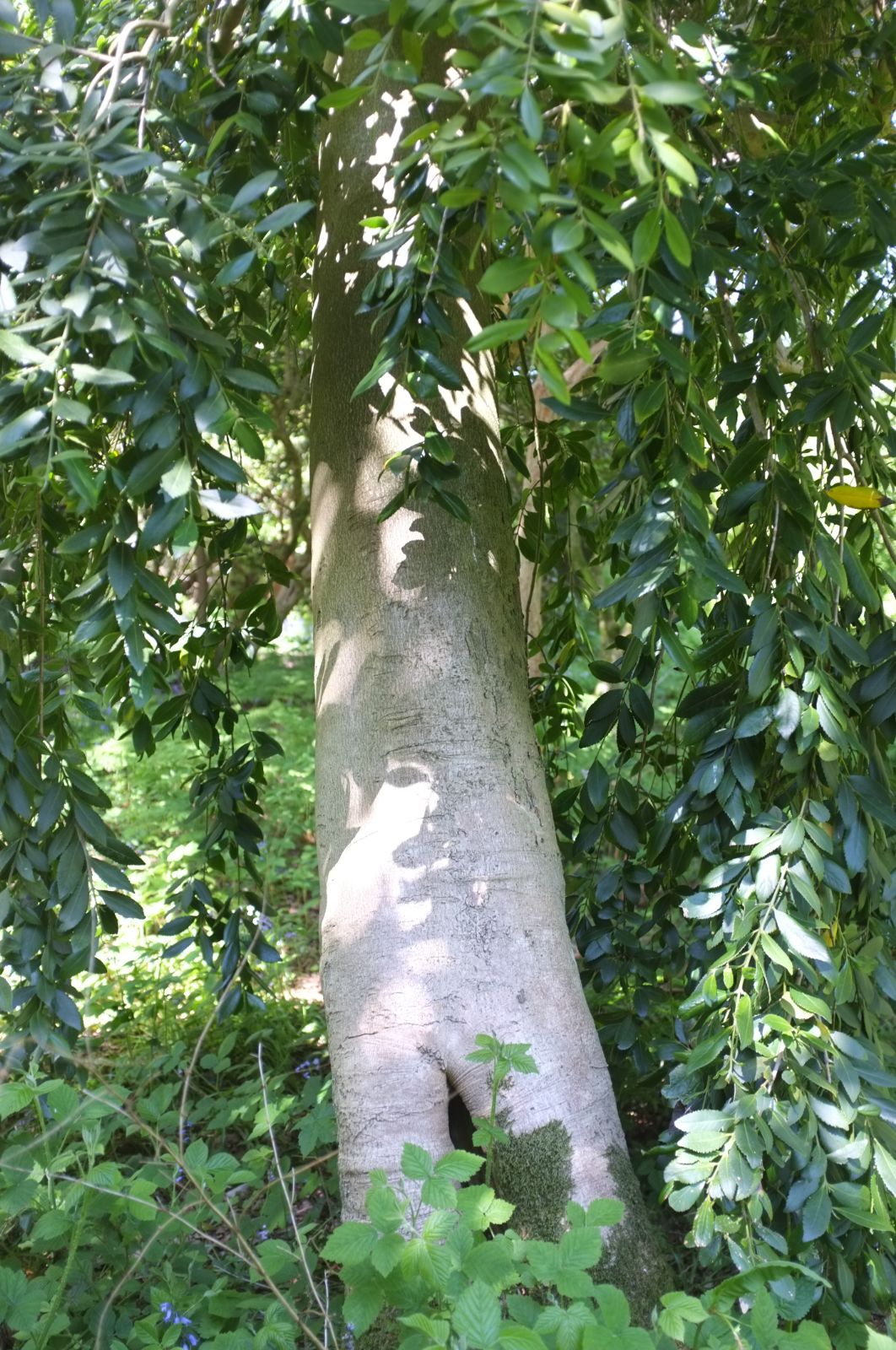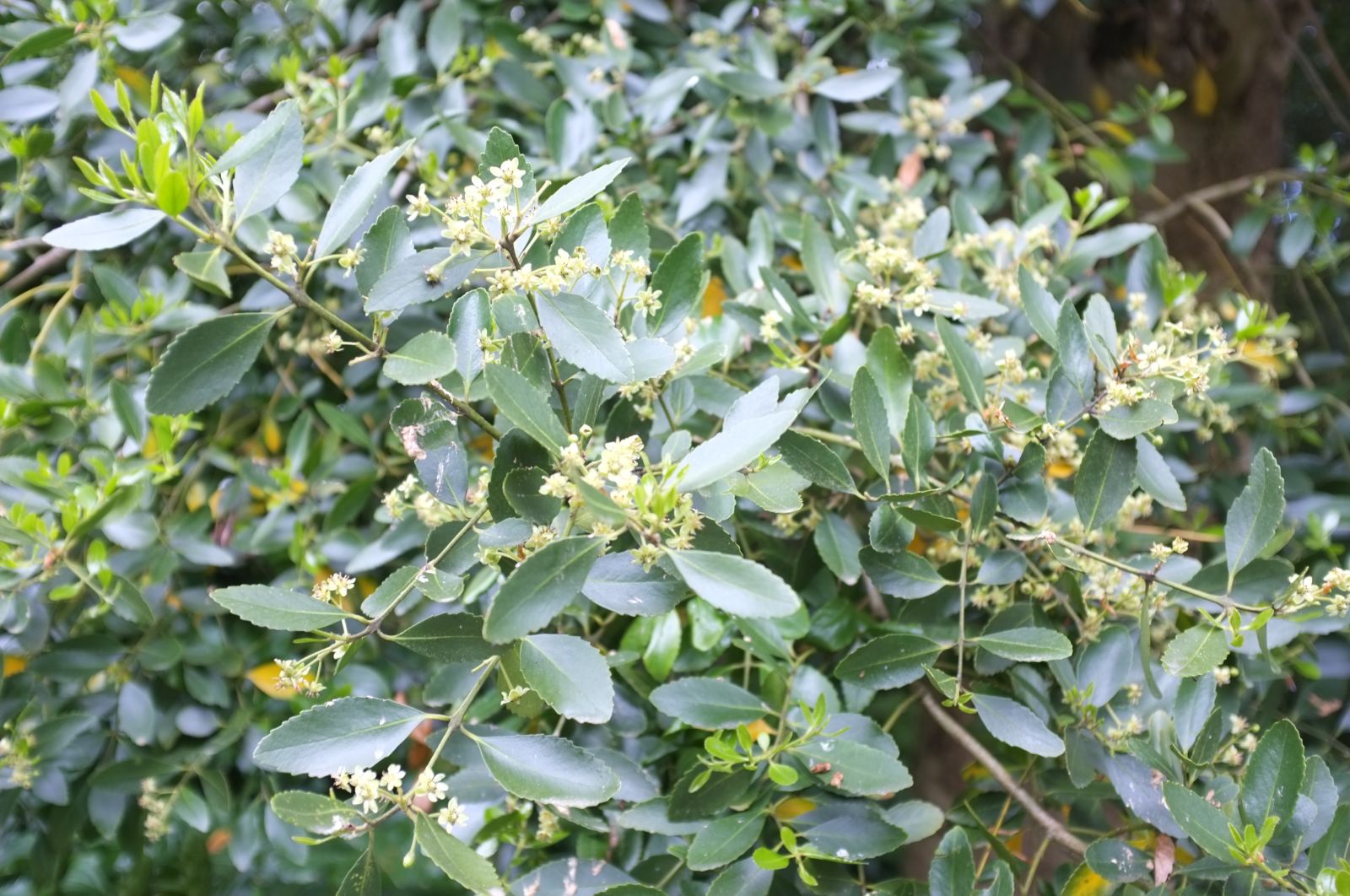Laurelia serrata
Credits
Article from Bean's Trees and Shrubs Hardy in the British Isles
Recommended citation
'Laurelia serrata' from the website Trees and Shrubs Online (treesandshrubsonline.
Genus
Synonyms
- L. philippiana Looser
- L. aromatica Mast., not Poir.
An evergreen tree with four-angled downy young stems, often of very slender habit in the wild. Leaves leathery, opposite, narrowly elliptical, 21⁄2 to 5 in. long, 1 to 21⁄2 in. wide, tapered at both ends, saw-toothed, dark glossy green and glabrous above, midrib beneath furnished with yellowish, centrally attached hairs; stalk 1⁄4 in. long, downy. When crushed the leaf has a pleasant, spicy fragrance, similar to that of the bay laurel. Flowers borne in the leaf-axils in clusters of three to nine; pedicels about 1⁄8 in. long. Calyx-tube (receptacle) cup-shaped, with eight equal lobes (perianth segments). Stamens of male flowers four in number; filaments glabrous, shorter than the anthers. Receptacle globose in the fruiting stage; achenes furnished with a tuft of long, fine, brown hairs, which enable them to travel long distances on the wind. Bot. Mag., t. 8279.
Native of Chile and bordering parts of Argentina. This interesting tree is quite hardy in Sussex if well sheltered from cold winds but grows best near the Atlantic seaboard. A tree at Penjerrick in Cornwall measured 47 × 31⁄4 ft in 1911; it is now about as high and 61⁄2 ft in girth, but dying at the top (1966). Others in the same county are: Tregothnan, 46 × 41⁄2 ft (1971) and Caerhays, 42 × 31⁄4 ft (1971). The plate in the Botanical Magazine was drawn from material from the fine specimen at Kilmacurragh in Co. Wicklow, Eire. Planted about 1868 this measures 51 × 71⁄4 ft (1966). This tree bears flowers of both sexes and produces fertile seeds.
L. sempervirens (Ruiz & Pavon) Tulasne Pavonia sempervirens Ruiz & Pavon; L. aromatica Poir. – This species has a more northern distribution than L. serrata and yields a superior timber, but is now rather rare, owing to overexploitation and to the felling or burning of the forests of Nothofagus obliqua which were its main habitat. It is closely allied to L. serrata but can be distinguished by the following characters: leaves with rather shallow, appressed teeth and a glabrous midrib; flowers on pedicels 3⁄8 to 3⁄4 in. long; filaments of stamens downy and as long as the anthers. Also, according to Dr Muñoz Pizarro (Sinopsis de la Flora Chilena, p. 244) the bark of L. sempervirens is aromatic and the wood odourless, whereas in L. serrata the bark is odourless and the wood has an unpleasant smell.
There is a fine specimen of L. sempervirens at Nymans in Sussex, near the glasshouses, raised from seeds collected by H. F. Comber in Chile in 1926 under No. 592.
From the Supplement (Vol. V)
specimens: Penjerrick, Cornwall, 60 × 71⁄4 ft (1979); Caerhays, Cornwall, 50 × 41⁄4 ft (1984); Trebah, Cornwall, 62 × 43⁄4 ft (1984); Singleton Abbey, Swansea, 54 × 51⁄2 ft, a fine spire-shaped tree (1982).
L. sempervirens – specimens: Nymans, Sussex, 46 × 33⁄4 ft (1983); Wakehurst Place, Sussex, 28 × 51⁄4 ft (1984).

